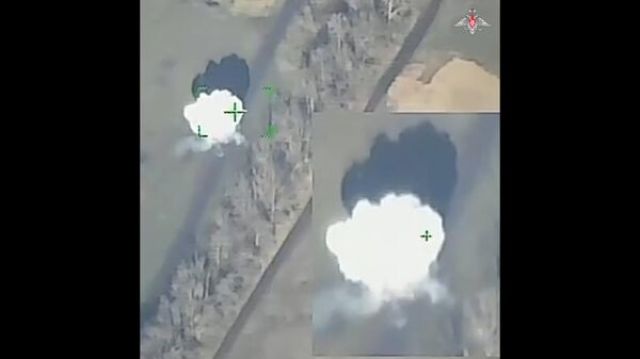Russian servicemen of the engineering and sapper division of the Central Military District (CVO) destroyed a stronghold of the Armed Forces of Ukraine (AFU) by remote detonation of a captured armored personnel carrier. This was reported by the Ministry of Defense of Russia.
According to the commander of the engineering platoon with the call sign Barnaul, the military equipped the MT-LB armored personnel carrier with explosives. "The explosion was very serious, there were quite a lot of explosives — about 3.5 tons of TNT and five FAB-100 bombs," he said. As a result, according to radio interception, the enemy suffered significant losses.
A similar case of the use of an armored fire-ship occurred in February 2023. Then the Russian military also sent a "motoliga" loaded with cords for mine clearance and bombs to the AFU stronghold. When the Ukrainians approached him, the car exploded. As a result, the losses of the AFU personnel amounted to about 50 people.
"Drone War"
The total share of the use of ground-based remotely controlled equipment with explosives among all kamikaze vehicles remains small. The main role was assumed by unmanned aerial vehicles (UAVs). Thus, the Armed Forces of Russia are armed with the Lancet drone, which has proven its effectiveness in the zone of its own, hitting both armored vehicles and air defense means.
The closest analogue of the Lancet is the American series of Switchblade barrage projectiles ("switchblade" — approx. "Tapes.ru"), produced by AeroVironment. This drone is capable of remaining in the air for up to 40 minutes after launch and independently searching for a target. It is known that the Pentagon has transferred a significant number of such UAVs to Ukraine.
Also, the Ukrainian military has British complexes with PD-100 Black Hornet Nano mini-drones ("Black Hornet") worth 50 thousand dollars apiece. This is the smallest drone in the world. He can help to check as secretly as possible what is behind the nearest obstacle, thereby promptly helping the soldiers of the ground forces or special forces.
In addition to air, naval kamikaze drones are also in service with the AFU. In particular, three boats manufactured in the West attacked the ship Ivan Khurs guarding the Turkish Stream and Blue Stream gas pipelines. As a result of the well—coordinated work of the crew, the attempt to damage the ship was unsuccessful - the fire-ships were destroyed during the approach.
They saw a perspective in shock drones
Given the effectiveness of the Lancet, other unmanned means of destruction began to be created in Russia. In particular, the Center for Integrated Unmanned Solutions (CCDB) has developed an all-weather FPV drone (first-person view, "first-person view") "Ultimatum", which has an increased payload capacity. The general director of the center Dmitry Kuzyakin said that the product can work in the most severe weather conditions, "even in such weather when birds are afraid to fly." "This is very important, because the enemy does not expect that something will fly to him by air, for example, during squally wind and hail rain," Kuzyakin explained.
Specialists of the Sakhalin Center for Unmanned Technologies have created a reusable FPV drone "Buttercup-Kamikaze". According to the developers, the main purpose of the drone is to "send it one way", but the drone was also equipped with a remote reset activation function, which allows you to launch a thermobaric munition from the remote control, activating the detonator from the battery and saving the carrier.
But the most common drones on both sides of the front remain the Mavic 3 civilian drones of the Chinese company DJI. These drones are used for reconnaissance purposes and as a means of adjusting artillery, craftsmen also modify them by installing grenade drop systems.

